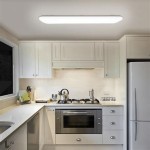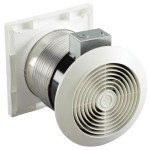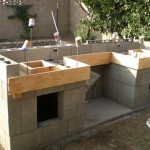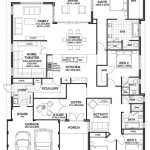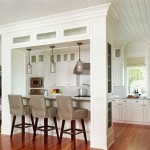Small Kitchen Remodels On A Budget: Maximizing Space and Style
Kitchen remodels are often perceived as expensive and extensive undertakings. However, transforming a small kitchen into a functional and aesthetically pleasing space does not necessarily require vast financial resources. Thoughtful planning, strategic material selection, and a focus on DIY solutions can make a budget-conscious remodel a reality. This article explores key strategies for remodeling a small kitchen on a limited budget, emphasizing practicality and maximizing both space and style.
Planning and Prioritization are Paramount
The foundation of a successful budget-friendly kitchen remodel lies in meticulous planning. Before any demolition or purchasing begins, a clear vision of the desired outcome is essential. This involves assessing the current kitchen layout, identifying its shortcomings, and determining the most pressing needs to address. This process should also include a detailed budget allocation for different aspects of the remodel, such as materials, appliances, and labor if professional assistance is required for any tasks.
A critical aspect of planning is prioritizing the elements that will have the greatest impact on functionality and aesthetics. For instance, if storage is a significant issue, focusing on clever storage solutions might be more beneficial than investing in high-end countertops. Similarly, if the existing appliances are outdated and inefficient, replacing them with energy-efficient models could offer long-term cost savings. Prioritization allows for strategic resource allocation, ensuring that the most important aspects of the remodel receive adequate attention and budget.
Consider the existing layout carefully. Can it be improved without significant structural changes? Moving plumbing or electrical lines can quickly escalate costs. Exploring options that retain the existing infrastructure will help keep the budget in check. Think about reconfiguring existing cabinets, adding pull-out shelves, or utilizing vertical space efficiently rather than completely replacing the cabinetry.
Another crucial step in the planning phase is creating a detailed design plan. This can involve sketching the proposed layout, using online kitchen design tools, or consulting with a kitchen designer for a limited consultation. The design plan should specify the placement of cabinets, appliances, countertops, and other features, as well as the overall color scheme and style. This detailed plan serves as a roadmap for the entire remodel, ensuring that all aspects of the project are coordinated and aligned with the budget.
Strategic Material Selection and Cost-Effective Alternatives
Material selection is a major factor influencing the overall cost of a kitchen remodel. Opting for budget-friendly alternatives to high-end materials can significantly reduce expenses without sacrificing aesthetics or functionality. For example, instead of solid hardwood cabinets, consider using cabinets with durable laminate or thermofoil finishes. These materials offer a similar look and feel at a fraction of the cost.
Countertops are another area where significant savings can be achieved by choosing alternative materials. Laminate countertops, while often overlooked, have come a long way in terms of design and durability. They are available in a wide range of colors and patterns, mimicking the look of more expensive materials like granite or marble. Another affordable option is butcher block countertops, which offer a warm and inviting aesthetic while being relatively easy to install and maintain. For backsplash, consider ceramic or porcelain tiles, which are generally more affordable than glass or natural stone tiles.
Flooring options also present opportunities for cost savings. Vinyl flooring, particularly luxury vinyl planks (LVP), is a durable, water-resistant, and affordable choice for kitchens. It is available in a variety of styles, including wood-look and tile-look options. Another budget-friendly option is sheet vinyl flooring, which is easy to install and offers excellent water resistance. When selecting materials, it is crucial to consider not only the upfront cost but also the long-term durability and maintenance requirements.
Consider reclaimed materials. Salvaged wood, used appliances (inspected and certified), and vintage hardware can add character and save money. Architectural salvage yards are excellent resources for finding unique and affordable materials. Furthermore, exploring clearance sections at home improvement stores can often uncover hidden treasures at discounted prices.
Embracing the Power of DIY and Repurposing
One of the most effective ways to save money on a kitchen remodel is to handle as much of the labor as possible. Tasks such as painting, demolition (within structural safety limits), cabinet installation (if comfortable), and backsplash tiling can be tackled by homeowners with basic DIY skills. Online tutorials and instructional videos can provide guidance for these tasks. However, it is important to assess one's skills honestly and to seek professional help for tasks that are beyond one's capabilities, particularly those involving plumbing or electrical work. Incorrectly installed plumbing or electrical systems can pose safety hazards and lead to costly repairs down the line.
Repurposing existing elements is another excellent way to reduce costs and add character to the kitchen. Instead of completely replacing the existing cabinets, consider giving them a fresh coat of paint or replacing the hardware. New knobs and pulls can dramatically change the look of cabinets without the expense of replacing them altogether. Existing light fixtures can be updated with new shades or bulbs. Even small details, such as repurposing jars or containers for storage, can contribute to the overall budget savings.
Focus on cosmetic updates. A fresh coat of paint can instantly brighten the space and create a clean, updated look. Replacing outdated hardware on cabinets and drawers is a simple and inexpensive way to modernize the kitchen. New lighting fixtures can also have a significant impact on the overall ambiance.
When engaging in DIY projects, safety should always be a top priority. Wear appropriate safety gear, such as gloves, masks, and eye protection, and follow all safety guidelines provided by manufacturers of tools and materials. If unsure about a particular task, it is always best to consult with a professional before proceeding.
Maximizing Space and Storage Efficiency
In a small kitchen, maximizing every inch of space is crucial. Clever storage solutions can significantly improve functionality and reduce clutter. Install pull-out shelves in cabinets to make it easier to access items at the back. Utilize vertical space by adding shelves or hanging racks on walls. Over-the-door organizers can be used to store spices, cleaning supplies, or other small items.
Consider installing a kitchen island or peninsula if space allows. These features can provide additional counter space, storage, and seating. A rolling kitchen cart is a versatile alternative that can be moved around as needed. Wall-mounted knife racks and magnetic spice racks can free up valuable counter space.
Think vertically. Install shelves reaching to the ceiling to maximize storage space. Use wall-mounted organizers for utensils, spices, and other items. Consider a pot rack to free up cabinet space.
Under-cabinet lighting can brighten the workspace and make it easier to see while cooking. Consider installing LED strip lights, which are energy-efficient and easy to install. Good lighting can also make a small kitchen feel larger and more inviting.
Lighting and Ambiance Considerations
Lighting plays a crucial role in the overall look and feel of a kitchen. Good lighting can make a small kitchen feel larger, brighter, and more inviting. Incorporate a combination of ambient, task, and accent lighting to create a well-lit and functional space. Ambient lighting provides overall illumination, while task lighting focuses on specific work areas, such as the countertop and sink. Accent lighting highlights architectural features or decorative elements.
Replace outdated light fixtures with modern and energy-efficient LED fixtures. LED bulbs are long-lasting and consume significantly less energy than traditional incandescent bulbs. Consider installing under-cabinet lighting to illuminate the countertop and make it easier to see while cooking. A pendant light above the kitchen island or peninsula can add a touch of style and provide additional task lighting.
Pay attention to natural light. Maximize the amount of natural light entering the kitchen by keeping windows clean and unobstructed. Consider adding a skylight or larger window if possible. Natural light can make a small kitchen feel more open and airy.
Appliance Strategies for Frugal Remodeling
Replacing appliances can be a significant expense in a kitchen remodel. However, there are strategies for minimizing these costs. If the existing appliances are relatively new and in good working condition, consider keeping them to save money. If replacements are necessary, explore options such as scratch-and-dent appliances or refurbished appliances. These appliances are often available at discounted prices and can provide significant savings.
Consider purchasing energy-efficient appliances. Although they may have a higher upfront cost, energy-efficient appliances can save money on utility bills over the long term. Look for appliances with the Energy Star label, which indicates that they meet strict energy efficiency standards. Another option is to purchase appliances during sales or promotions. Many retailers offer discounts on appliances during holidays or other special events.
Focus on essential appliances. Instead of investing in high-end, feature-rich appliances, consider purchasing basic models that meet your essential needs. A basic refrigerator, stove, and dishwasher can provide all the necessary functionality without the added expense of unnecessary features. Also, be mindful of appliance sizes. In a small kitchen, compact or apartment-sized appliances may be more appropriate to maximize space.

Diy Kitchen Makeover On A Budget Modern Farmhouse Style

A Stylish Kitchen On Small Budget

Remodel A Kitchen On Budget

Budget Friendly Classic White Kitchen Remodel All The Details Thrifty Frugal Mom

Kitchen Remodel Ideas On A Budget For Impactful Makeover

Kitchen Remodel On A Budget Fresh Squeezed Life
9 Small Kitchen Remodel Ideas On A Budget Vevano

Small Kitchen Makeover Ideas For A Big Change On Low Budget Before And After Inspiration

12 Small Kitchen Remodel Tips For A Stylish Renovation

A Kitchen Remodel Filled With Budget Friendly Ideas Clare

